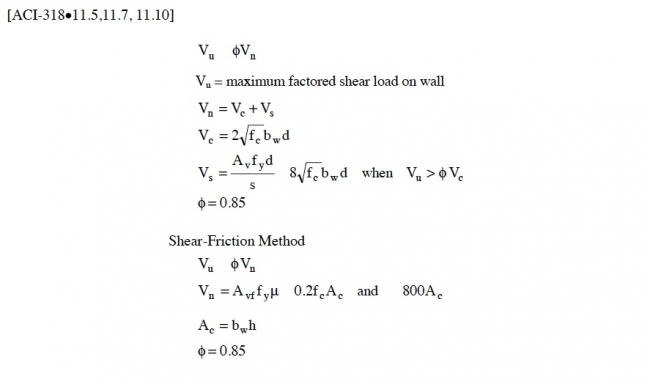Crack Width Calculation As Per Aci 318 14
- Crack Width Calculation As Per Aci 318 1400
- Crack Width Calculation As Per Aci 318 14 Free
- Crack Width Calculation As Per Aci 318 14 Online
- Crack Width Calculation As Per Aci 318 14 Pdf
ACI – 318; ADAPT-BUILDER 1. OVERVIEW Punching shear calculation applies to column-supported slabs, classified as two-way structural systems. This writing (i) defines the different conditions for punching shear calculation, (ii) presents the relationships used for code check of each condition using ACI-318, (iii) presents a numerical.

Crack Width Calculation As Per Aci 318 1400
Skip to end of metadataGo to start of metadata- The flexural crack width expression in the above equation, with h-x d-x = 1.2, is used in ACI 318-95 in the following form: (8) z = f s d c A o 3 A maximum value of z = 3064.5 N/mm is permitted for interior exposure, corresponding to a limiting crack width of 0.41 mm. ACI 318-95 also limits the value of z to 2539.2 N/mm for exterior exposure.
- P ð8Þ A maximum value of z = 3064.5 N/mm is permitted for inte- rior exposure, corresponding to a limiting crack width of 0.41 mm. ACI 318-95 also limits the value of z to 2539.2 N/ mm for exterior exposure, corresponding to a crack width of 0.33 mm.
In ETABS, shell or area element has two types of stiffnesses i.e. inplane stiffness refers as f11, f22 and f12 and out-of-plane stiffness refers as m11, m22 and m12. Refer to the below Figure which shows the direction of local axes and their corresponding stiffnesses:
For shear wall (both piers and spandrels), the flexural and axial behavior is modified by either f11 or f22 depending on the orientation of the local axis and the shear behavior is controlled by f12. In column and code terms f11 or f22 would correspond to modifications of EI or EA and f12 would correspond to modifications to GAshear. The code recommendations in Section 10.10 of ACI 318 code are related to slenderness effects where flexural deformations govern so they have recommended modifying EI (corresponding to f11 or f22 for shear walls). There is no recommendation about reducing the GAshear. You should, however, note that some of our users use modifiers for f12 also, where they expect deterioration of shear stiffness and want to be realistic in their modeling.
The above discussion applies assuming the local axes 1 and 2 of the shear wall area object are either vertical or horizontal. This is under user control. When drawing in ETABS the default is to have the 1 axis horizontal and the 2 axis vertical. This means that the flexural modifier for EI should be applied to f22 for wall piers and to f11 for spandrels. If you apply the modifier to both f11 and f22 it hardly affects the results.
For slabs where bending is always in the out-of-plane direction, modifiers m11, m22 and m12 are required to model cracking behavior. Mac os x lion 10.7 iso image free.
Crack Width Calculation As Per Aci 318 14 Free
Summary
Assuming beams and columns are modeled as frame then the stiffness modifier table is as follows:
ACI ETABS
Beams....................0.35*Ig I22 = I33 = 0.35

The blackboard collaborate launcher for mac. Columns..................0.70*Ig I22 = I33 = 0.70
Walls-Uncracked.........0.70*Ig modeled as shell – f11, f22 = 0.70
Walls-Cracked...........0.35*Ig similar to Walls-Uncracked (with modifiers of 0.35)
NOTE:
Crack Width Calculation As Per Aci 318 14 Online
Walls are generally not designed for out-of-plane bending to avoid excessive longitudinal reinforcement. In this case, use a small modifier say 0.1 for m11, m22 and m12 so numerical instabilities could be avoided. However, use m11, m22, m12 = 0.70 (or 0.35) when considering the out-of-plane bending in wall.
Crack Width Calculation As Per Aci 318 14 Pdf
Flat Plates & Flat Slabs..0.25*Ig modeled as membrane – f11, f22, f12 = 0.25 / modeled as shell – f11, f22, f12, m11, m22, m12 = 0.25 (for both cases fxx is not important if rigid diaphragm is assigned)